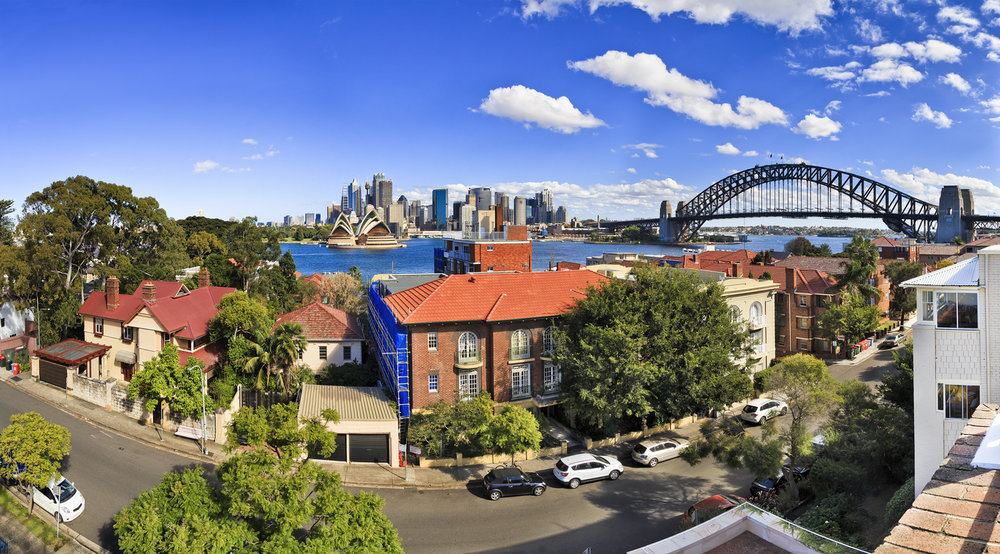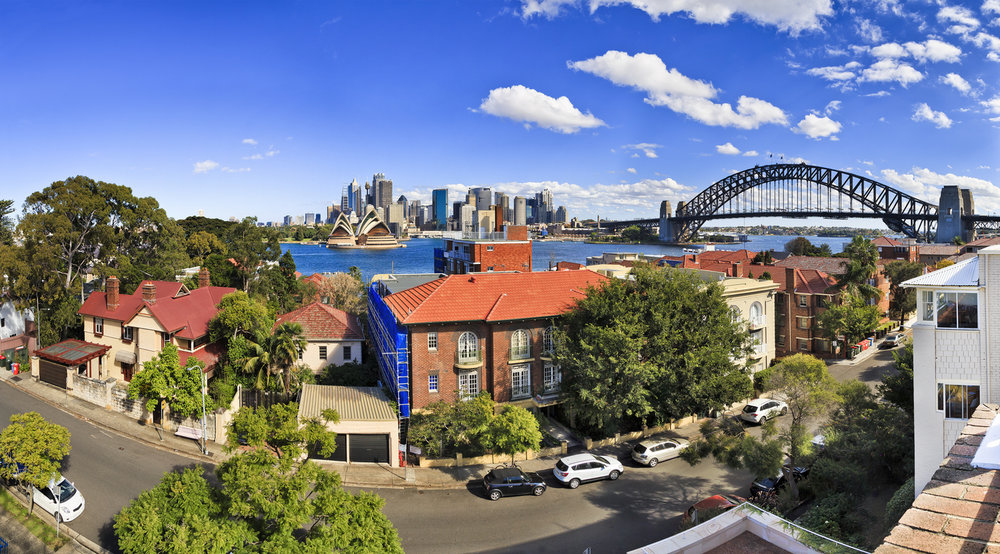People tend to treat complex issues as if they were simple ones. They want to know the definitive answer to a problem and get on with their day.
This helps explain why, in recent years, Chinese investors have been blamed for driving up house prices in Australia and making its housing among the least affordable on the planet. It has prompted protesters to picket the Chinese embassy and disrupt residential real estate auctions in Sydney. But is this accusation well founded?

Hans Hendrischke, Professor of Chinese Business and Management at the University of Sydney, and Wei Li, a lecturer at the university’s Business School, estimate Chinese residential real estate investment totals around two per cent of all transactions in Australia.
They cite Australian Bureau of Statistics figures from 2013-14, when Chinese buyers bought $5.8 billion of the $258 billion of residential property sold nationwide.
Since then, Chinese investment in residential real estate in Australia has mushroomed. According to the Foreign Investment Review Board, in 2014-15 Chinese buyers accounted for about a third of $60.75 billion in sales to foreigners.
Even so, Chinese nationals own only a small portion of Australia’s housing stock, says the Reserve Bank of Australia.
So, what are the real drivers of Australia’s soaring house prices, which are among the world’s highest both in absolute terms and relative to incomes?
Topics in this article:
Financial deregulation
In an article published in 2015, Reserve Bank of Australia (RBA) economists Marion Kohler and Michelle van der Merwe examined the factors driving long-term trends in Australian housing price growth over the past three decades.
‘The deregulation of the financial sector during the 1980s and the shift to a low inflation and low interest rate environment in the 1990s greatly increased household access to finance in Australia,’ they wrote.
It meant ‘previously credit constrained households were increasingly able to borrow more for a given level of income and pay higher prices’, according to Kohler and van der Merwe.
Then Treasurer Paul Keating deregulated Australia’s banking system between 1983 and 1985, accelerating lending competition. Image: Australian Broadcasting Corporation.
Kohler and van der Merwe say ‘without a corresponding increase in supply in the most desirable locations, this was likely to have led to a pick-up in housing price growth, and household debt’.
The International Monetary Fund (IMF) has cited research by the OECD – of which Australia is a member – that shows ‘30 per cent of the house price increases in OECD countries can be attributed to financial deregulation’.
Tax incentives
Australian economist Saul Eslake says Australia’s tax system ‘plays an unusual role in encouraging individual investment in residential real estate, which serves to inflate housing prices’.
Heading the list of tax incentives are negative gearing and the discount on capital gains on investor housing.
Introduced in the 1980s, negative gearing is a practice whereby an investor buys a property that loses money in the short term (the loan and related costs are greater than the rental income) in the expectation of making a capital gain in the future.
The investor can deduct these losses from their salary or wage income, thereby lowering their tax liability.
The original purpose of negative gearing was to boost housing supply by encouraging more investment in housing construction.
Instead, the vast majority of investors have bought established dwellings, reducing home ownership and stimulating higher house prices.

In addition, capital gains on investor housing held for over a year are taxed at half the marginal tax rate applied to other income (n.b. owner-occupied housing is exempt from capital gains tax).
Critics argue these tax concessions have led to houses being valued as speculative assets, not as homes, and house prices being bid up.
Investors – who can buy new and established homes, despite having a tax advantage over owner-occupiers, including first-home buyers – now account for about a third of new home loans.
Some experts say Australians would be better served if the incentives applied only to newly constructed houses, which would increase supply and potentially moderate house-price rises.
Demographics
According to the IMF, Australia’s population has grown rapidly since 2000, and much faster than the OECD average.
However, residential investment had remained stable at around 5 per cent of GDP for much of the past two decades, only in line with the OECD average, the IMF says.
The result: underlying demand for new dwellings has exceeded supply.
The RBA says annual demand for new housing ‘was relatively stable prior to the mid-2000s, fluctuating between 120,000 and 145,000 new dwellings every year’.
‘Since then annual demand for new housing has increased by around 40 per cent (or by about 50,000 new dwellings), largely owing to strong population growth [underpinned by high immigration]’.
Adding to the demand pressures is the decline in the average household size, which the RBA attributes to falling fertility rates, an ageing population and rising household incomes.
‘Average household size…has declined markedly since the 1960s and, all else equal, has generated an increase in demand for housing for a given level of population.’
Despite worsening housing affordability, lone-person households are expected to increase at a much faster rate than family and group households.
Planning laws
Government red tape is among the reasons given for the supply of housing in Australia failing to keep up with demand – and the resultant higher house prices.
Citing Australian and international literature, the RBA says ‘local zoning and planning policies have played a prominent role in explaining some of the protracted supply-side rigidities’.
Other constraints include the length and complexity of the planning process, the time it takes to construct new dwellings, a lack of infrastructure funding, the cost of readying undeveloped land for construction, and the availability of suitable sites.

Tony Powell AO, a former director of the National Capital Planning Authority, told the Select Senate Committee on Housing Affordability in Australia in 2008 that developer levies in New South Wales were as much as $165,000 per median price house lot.
He said this was ‘the straw that broke the camel’s back’ as developers have simply stopped buying land and have withdrawn from the outer-metropolitan housing market…because the overall cost of land acquisition and servicing is more than the consumer can bear’.
The consensus is that low construction activity in Sydney in the 2000s has contributed to the city’s rapid house price increases in recent years.
The Urban Development Institute of Australia says one of the keys to affordable housing is for governments to supply an ample amount of serviced land.
However, Steven Rowley, the director of the Australian Housing and Urban Research Institute at Curtin University, is sceptical, arguing that developers tend to pass on the high cost of land to the end consumer.
Urbanisation
In his annual parliamentary testimony in 2015, the then Governor of the RBA, Glenn Stevens, commented: ‘A country with this much land, it ought to be cheap to get a roof over your head’.
However, despite being the world’s most sparsely populated continent apart from Antarctica, Australia is highly urbanised, with 40 per cent of its population residing in just two cities: Sydney and Melbourne.
By contrast, less than five per cent of the United States’ population live in its two most populous cities (New York and Chicago).
‘As city prices are typically higher than rural, countries with high degrees of urbanisation tend to have higher house prices on average,’ says the IMF.
‘Supply of housing tends to be inelastic as geographic conditions, such as limited available land for high density housing and lack of infrastructure, can restrict housing supply in certain areas, causing house prices to increase rapidly.’
In a report published in 2001, RBA economists Luci Ellis and Dan Andrews theorised that the ‘relative lack of transport infrastructure in Australia, due to its size and sparse population, may have…fostered the growth of large urban clusters’.
Keep a look out for Part 2 of this blog where I’ll cover the impact of immigration on housing affordability, the ‘housing bubble’ and the outlook for the future of housing supply in Australia. Stay tuned.







Happy for negative gearing to be removed. But do not tax on the rental income as well. So it goes both ways.